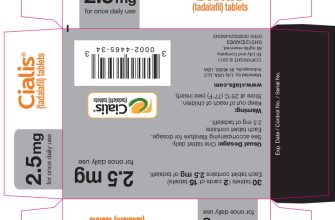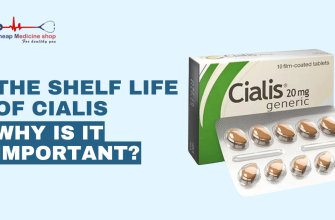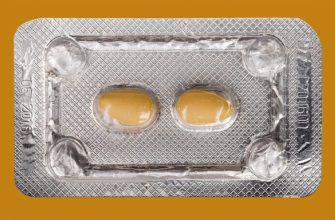No, Cialis isn’t a direct treatment for Raynaud’s disease. However, its effects on blood vessel dilation might offer indirect benefits for some patients. Research suggests potential improvements in symptoms, particularly regarding cold-induced vasoconstriction.
The mechanism lies in Cialis’s ability to relax blood vessels. This vasodilation could counteract the excessive constriction characteristic of Raynaud’s, potentially reducing the frequency and severity of attacks. However, it’s crucial to understand this isn’t a guaranteed outcome, and effects vary considerably between individuals.
Before considering Cialis for Raynaud’s symptom management, consult your doctor. They can assess your specific situation, discuss potential benefits and risks, and help determine if it’s an appropriate option. Other treatments, such as lifestyle modifications and medication specifically for Raynaud’s, remain primary approaches. Self-medicating is strongly discouraged.
Studies exploring this application of Cialis are limited, and more research is needed to firmly establish its efficacy and safety in managing Raynaud’s. Therefore, it should only be considered as a supplementary treatment option under strict medical supervision, never as a standalone solution.
- Cialis for Raynaud’s Disease: A Detailed Look
- Mechanism of Potential Action
- Available Research and Clinical Trials
- Potential Side Effects and Considerations
- Alternative Treatments and Management Strategies
- Summary of Key Findings
- Consult Your Physician
- Understanding Raynaud’s Phenomenon and its Symptoms
- Recognizing the Signs
- Differentiating Raynaud’s Types
- Mechanism of Action: How Cialis Might Help
- Improved Blood Flow
- Specific Mechanisms and Considerations
- Potential Benefits and Cautions
- Current Research and Clinical Trials
- Potential Benefits and Limitations of Cialis
- Dosage and Administration: What to Expect
- Side Effects and Potential Risks
- Cardiovascular Effects
- Other Potential Risks
- Medication Interactions
- Alternative Treatments for Raynaud’s
- Consulting Your Doctor: Making Informed Decisions
- Understanding Cialis and Raynaud’s
- Exploring Alternative Treatments
- Making the Best Choice
- Open Communication is Key
Cialis for Raynaud’s Disease: A Detailed Look
Currently, Cialis (tadalafil) isn’t FDA-approved for treating Raynaud’s disease. However, some research suggests potential benefits due to its vasodilatory properties, meaning it widens blood vessels. This might improve blood flow to the extremities, thus reducing Raynaud’s symptoms like numbness, tingling, and color changes.
Mechanism of Potential Action
Cialis inhibits phosphodiesterase-5 (PDE5), an enzyme that constricts blood vessels. By inhibiting PDE5, Cialis increases levels of cyclic guanosine monophosphate (cGMP), a molecule that promotes vasodilation. This increased blood flow could counteract the vasoconstriction characteristic of Raynaud’s attacks.
Available Research and Clinical Trials
While preliminary studies hint at potential benefits, larger, well-designed clinical trials are needed to confirm Cialis’s efficacy and safety for Raynaud’s treatment. The existing evidence is insufficient to make definitive conclusions.
Potential Side Effects and Considerations
Cialis, like other medications, carries potential side effects. These can include headache, flushing, nasal congestion, and indigestion. More serious, though rare, side effects are possible. Individuals with underlying health conditions, particularly heart problems, should discuss Cialis use with their doctor before considering it for Raynaud’s.
Alternative Treatments and Management Strategies
Many effective treatments already exist for Raynaud’s disease. These include lifestyle modifications (avoiding cold exposure, quitting smoking), medication (calcium channel blockers, alpha-blockers), and in severe cases, surgical interventions. A comprehensive approach tailored to individual needs is often the most successful strategy.
Summary of Key Findings
| Aspect | Details |
|---|---|
| FDA Approval | Not approved for Raynaud’s |
| Mechanism | Vasodilation via PDE5 inhibition |
| Research | Limited; further trials needed |
| Side Effects | Potential for headaches, flushing, etc. |
| Alternatives | Lifestyle changes, other medications |
Consult Your Physician
Always consult your doctor before starting any new medication, including Cialis, especially if you have pre-existing health conditions. They can assess your individual circumstances and recommend the most appropriate treatment plan for your Raynaud’s disease.
Understanding Raynaud’s Phenomenon and its Symptoms
Raynaud’s phenomenon is a condition affecting blood vessels in the extremities, usually fingers and toes. It’s triggered by cold temperatures or stress, causing a temporary reduction in blood flow. This leads to noticeable color changes and discomfort.
Recognizing the Signs
Understanding the symptoms is key to early diagnosis and management. Here’s what to look for:
- Color Changes: Your fingers or toes might turn white (pallor), then blue (cyanosis), and finally red (rubor) as blood flow returns. This is the classic Raynaud’s progression.
- Numbness and Tingling: A loss of sensation, pins and needles, or a feeling of coldness are common. These sensations usually accompany the color changes.
- Pain: While not always present, some experience throbbing pain, particularly during the red phase (reperfusion) of the attack.
- Swelling: In some cases, your fingers or toes might swell slightly after an attack.
The duration and severity of these symptoms vary from person to person. Attacks can last for minutes or hours, and their frequency differs individually.
Differentiating Raynaud’s Types
Raynaud’s is categorized into two main types:
- Primary Raynaud’s (Raynaud’s disease): This is the more common type. It’s usually mild and doesn’t have an underlying medical cause. It primarily affects young women.
- Secondary Raynaud’s (Raynaud’s phenomenon): This type is associated with an underlying condition, such as autoimmune diseases (like lupus or rheumatoid arthritis), connective tissue disorders, or certain medications. It often presents with more severe symptoms and warrants medical attention.
If you experience frequent or severe symptoms, consult a healthcare professional for proper diagnosis and treatment options.
Mechanism of Action: How Cialis Might Help
Cialis, primarily known for treating erectile dysfunction, may offer potential benefits for Raynaud’s disease through its impact on blood vessel function. This isn’t a direct treatment, but rather a potential avenue for symptom management.
Improved Blood Flow
Cialis’s active ingredient, tadalafil, inhibits an enzyme called phosphodiesterase-5 (PDE5). PDE5 breakdown of cyclic GMP (cGMP), a molecule crucial for relaxing blood vessel walls. By inhibiting PDE5, tadalafil increases cGMP levels, leading to vasodilation–widening of blood vessels. This improved blood flow might alleviate Raynaud’s symptoms by improving circulation to the extremities.
Specific Mechanisms and Considerations
- Increased Nitric Oxide: Tadalafil’s effect on cGMP enhances the action of nitric oxide (NO), a potent vasodilator naturally produced in the body. More NO means stronger vasodilation.
- Reduced Vasoconstriction: By promoting vasodilation, tadalafil counteracts the vasoconstriction (narrowing of blood vessels) that triggers Raynaud’s attacks. It does this indirectly, not through a direct interaction with the processes causing vasoconstriction.
- Limited Evidence: It’s crucial to acknowledge that while the mechanism is plausible, definitive clinical trials specifically assessing tadalafil’s efficacy for Raynaud’s are lacking. Existing research is primarily based on its effect on blood vessels and extrapolation to Raynaud’s.
Potential Benefits and Cautions
- Improved Cold Sensitivity: Increased blood flow may reduce sensitivity to cold temperatures, a major trigger for Raynaud’s attacks.
- Reduced Attack Severity: The improved circulation could potentially lessen the severity of attacks, reducing pain, numbness, and discoloration of the fingers and toes.
- Consult a Physician: Before considering Cialis for Raynaud’s, it’s absolutely necessary to consult with a physician. They can evaluate your individual situation, assess potential risks, and determine if it’s a suitable treatment option, especially considering potential drug interactions.
Current Research and Clinical Trials
Currently, no large-scale clinical trials specifically investigate Cialis’s efficacy for Raynaud’s phenomenon. However, smaller studies and preclinical research explore the potential benefits of phosphodiesterase-5 (PDE5) inhibitors, like Cialis, in improving blood flow.
Researchers focus on Cialis’s vasodilatory properties, its ability to relax blood vessels. This mechanism could theoretically alleviate Raynaud’s symptoms by increasing blood flow to the extremities. Preclinical studies using animal models have shown promising results, suggesting a potential therapeutic role.
Several ongoing studies are investigating PDE5 inhibitors for other vascular conditions, which might indirectly provide valuable information applicable to Raynaud’s. Check clinicaltrials.gov for updates on relevant trials. These trials often include detailed inclusion and exclusion criteria, providing insights into which patient populations might most benefit from further investigation of Cialis in the context of Raynaud’s.
It’s important to note that individual responses to Cialis vary. Patients considering Cialis for Raynaud’s should discuss this off-label use with their physician to weigh potential benefits against potential risks and to ensure proper monitoring.
Future research should concentrate on larger, well-designed clinical trials specifically focusing on Cialis’s effectiveness and safety for Raynaud’s disease. These trials must clearly define inclusion criteria and outcome measures to establish firm evidence.
Potential Benefits and Limitations of Cialis
Cialis, primarily known for treating erectile dysfunction, shows promise in managing Raynaud’s phenomenon due to its vasodilatory properties. Specifically, it relaxes blood vessels, potentially increasing blood flow to the extremities affected by Raynaud’s.
Studies suggest improved symptoms, such as reduced frequency and severity of attacks, in some patients. However, the benefit isn’t uniform, and response varies significantly between individuals. Larger, more rigorous clinical trials are necessary to confirm these initial observations.
While Cialis might offer relief, it’s not a cure. Lifestyle modifications remain crucial, including avoiding cold exposure, quitting smoking, and managing underlying conditions like lupus or scleroderma that can contribute to Raynaud’s.
| Potential Benefit | Limitation |
|---|---|
| Improved blood flow to extremities | Variable response; not effective for all patients |
| Reduced frequency and severity of Raynaud’s attacks | Requires prescription; potential side effects (headache, flushing, nasal congestion) |
| May complement other Raynaud’s treatments | Long-term safety data limited |
Consult your doctor before using Cialis for Raynaud’s. They can assess your individual needs and risks, determining if it’s a suitable option and discussing appropriate dosage and potential interactions with other medications.
Dosage and Administration: What to Expect
Cialis is not FDA-approved to treat Raynaud’s disease. Therefore, there’s no established dosage or administration protocol for this off-label use. Any use should be under strict medical supervision.
If your doctor considers Cialis for your Raynaud’s, they will determine the appropriate dosage based on your individual health status and response to treatment. This might involve starting with a low dose and gradually increasing it as needed, closely monitoring your blood pressure and other vital signs.
Expect regular check-ups to assess the treatment’s efficacy and identify any potential side effects. Open communication with your doctor is paramount. Report any unexpected symptoms immediately.
Remember, Cialis’s impact on Raynaud’s is not fully researched. The benefits must outweigh potential risks in each individual case. Your doctor will guide you through this process.
Be prepared for a discussion about alternative treatment options for Raynaud’s, as Cialis isn’t a standard or first-line therapy. Lifestyle modifications, such as managing stress and avoiding cold exposure, often play a significant role in managing the condition.
Side Effects and Potential Risks
Cialis, while sometimes explored off-label for Raynaud’s, carries potential side effects. These can range from mild to severe, depending on individual factors and dosage. Commonly reported side effects include headaches, nasal congestion, flushing, and indigestion. These are usually mild and transient.
Cardiovascular Effects
More seriously, Cialis can affect blood pressure and heart rate. Individuals with existing cardiovascular conditions should exercise extreme caution and consult their physician before considering this treatment. Low blood pressure, heart attack, and stroke are possible, albeit rare, adverse events. You should monitor your blood pressure regularly if using Cialis for Raynaud’s.
Other Potential Risks
Vision changes, such as blurred vision or changes in color perception, are also possible side effects. Prolonged or severe vision problems warrant immediate medical attention. Additionally, some men report hearing problems, including ringing in the ears (tinnitus). Finally, prolonged erections (priapism) are a serious, though infrequent, risk requiring immediate medical intervention. This necessitates prompt medical attention.
Medication Interactions
Cialis interacts with several medications. Before starting Cialis, discuss all medications, supplements, and herbal remedies with your doctor to minimize the risk of harmful interactions. This includes nitrates, commonly prescribed for chest pain. Combining these can cause a dangerous drop in blood pressure.
Alternative Treatments for Raynaud’s
Manage your triggers. Avoid cold temperatures and smoking; these significantly worsen symptoms. Wear warm clothing, including gloves and socks, even in mild weather.
Consider biofeedback. This technique helps you learn to control blood flow to your extremities through relaxation exercises. Studies show it can improve Raynaud’s symptoms for many.
Explore calcium channel blockers. These medications relax blood vessels, improving circulation. Your doctor can determine the appropriate dosage and medication.
Try regular exercise. Moderate physical activity promotes better circulation throughout your body, potentially easing Raynaud’s episodes. Aim for at least 30 minutes most days of the week.
Manage stress. Stress exacerbates Raynaud’s. Incorporate stress-reduction techniques like yoga, meditation, or deep breathing exercises into your daily routine.
Maintain a healthy diet. A balanced diet rich in fruits, vegetables, and omega-3 fatty acids can support overall circulation and general health.
Consult a specialist. A rheumatologist or vascular specialist can provide a tailored treatment plan addressing your specific needs and symptom severity.
Note: This information is for educational purposes and does not constitute medical advice. Always consult your doctor before starting any new treatment.
Consulting Your Doctor: Making Informed Decisions
Schedule a consultation. Discuss your Raynaud’s symptoms in detail, including frequency, severity, and triggers. Provide a complete medical history, mentioning any other health conditions or medications you’re taking. This allows your doctor to assess potential interactions.
Understanding Cialis and Raynaud’s
Ask your doctor about the potential benefits and risks of using Cialis to manage Raynaud’s. Specifically inquire about the mechanism of action relevant to your condition. Your doctor can explain if the vasodilation properties of Cialis might offer relief for your specific symptoms.
Exploring Alternative Treatments
Explore non-pharmaceutical options. Your doctor can discuss lifestyle modifications, such as stress reduction techniques and hand protection strategies, that might reduce Raynaud’s episodes. They can also explain the pros and cons of other medications specifically designed to treat Raynaud’s phenomenon.
Making the Best Choice
Weigh the risks and benefits of any treatment option carefully with your doctor. Discuss potential side effects of Cialis in relation to your overall health. Create a treatment plan tailored to your individual needs, considering both short-term and long-term effects. Regular follow-up appointments are vital to monitor progress and adjust your treatment plan as needed.
Open Communication is Key
Ask questions. Don’t hesitate to clarify anything you don’t understand. Ensure you fully understand the treatment plan before you proceed. Active participation in your healthcare decisions leads to better outcomes.







